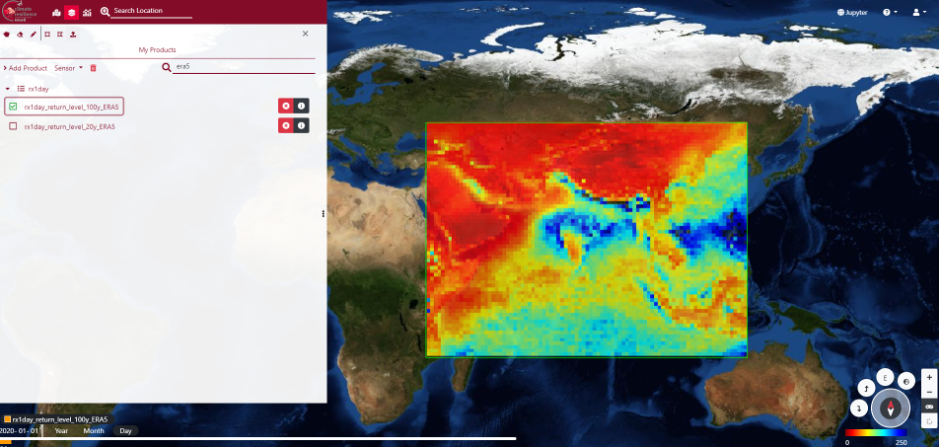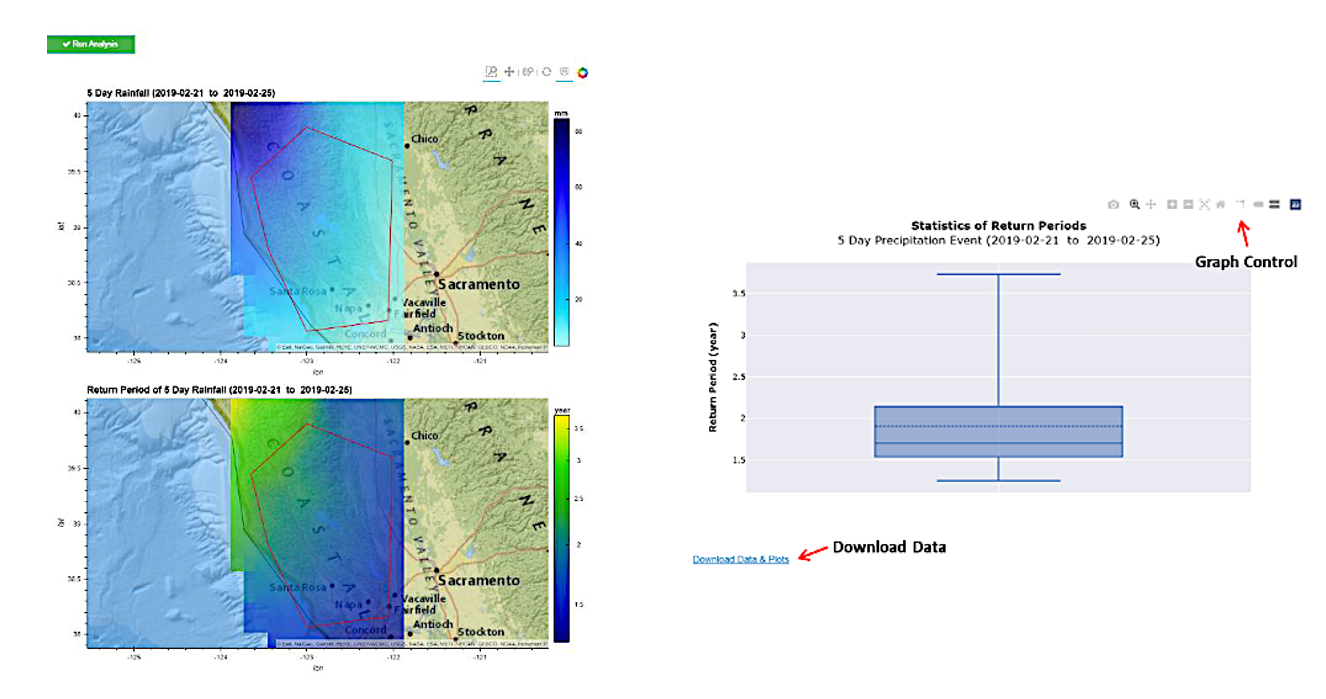For over 18 months, the European Space Agency’s (ESA) Earth Observation for Sustainable Development Climate Resilience (EO4SD CR) Cluster has been working with the International Finance Corporation (IFC) and the World Bank’s Multilateral Investment Guarantee Agency (MIGA) to integrate Earth Observation (EO) data into its climate risk screening tool providing evidence of climate risks to its investments. The results of the collaboration to date have now been released in a new brochure presenting the types of EO services that were developed and how they were applied.
Click here to download the brochure
The EO4SD CR cluster worked with IFC to introduced new extreme rainfall indicators to improve its assessment of future flood impacts, seamlessly integrating EO-based extreme rainfall return levels into IFC’s existing climate risk tool. In addition, working with MIGA, the Cluster produced a rainfall explorer tool that provides reliable insights into potential climate risks to existing and future investments.
The brochure outlines the challenges faced by both IFC and MIGA when assessing climate risks to their investments. The IFC’s existing climate risk screening tool faced challenges when projecting the future risk of drought, flooding, and related impacts of extreme rainfall as they are not well-captured by climate modelling for many of the regions where the IFC operates and are often not presented at the required resolutions.

Precipitation from GPCP for 31st August 2019, presented on the EO4SD Climate Resilience Cluster’s EO platform.
MIGA, the political risk insurance arm of the World Bank, faces similar problems when assessing climate risk to its projects. “MIGA evaluates potential climate risks to its projects and looks to align our financial flows with long-term climate resilient development pathways. Simply put, our team looks to identify appropriate climate resilience responses to reduce the likelihood of financial or environmental underperformance of our projects” explains MIGA’s Manu Sharma. “In conducting our project assessments, we make use of climate change projections and have found it challenging to very quickly interpret the significance of shifts in various rainfall indicators, specifically as it relates to flood risk.”
For MIGA, the EO4SD CR cluster developed an EO-based data product called the ‘Rainfall Explorer”, an interactive cloud-based tool, the rainfall explorer enables users to:
- Quickly find the 5-day cumulative rainfall return level and return period preceding past major flood events;
- Find the 5-day rainfall return period and return level for any terrestrial location globally and any date between 1979 and near-real time; and
- Visualise data via interactive maps and box plots covering a given flood footprint or user-defined area.
The Rainfall Explorer is powerful as it allows the user to assess the statistical significance of near-real time rainfall events. This means that the IFC and MIGA can understand the likely flood risk associated with a particular level of rainfall, compared to historical events in the same area.
“[The Rainfall Explorer] really provides several benefits to climate adaptation practitioners across the Multilateral Development Banks” said Manu Sharma, “it allows us to look up any event that has occurred anywhere on the planet and we can work out the duration of that event, as well as the significance of that event. The significance is based on the historical record for that specific location.”

Outputs from the Rainfall Explorer tool allow users to visualise rainfall events, the return periods of those events, and their statistical significance.
The EO4SD CR cluster provides insight about the potential of Earth Observation (EO) data to support climate-resilient decision making at the regional and national scale. In collaboration with several International Financial Institutions, the EO4SD CR cluster has developed EO-based screening and risk management products that can be integrated into different platforms and project cycles.
Other summaries of EO4SD CR projects can be found here, as well as a webinar series outlining how different EO data products have been used and hands-on guided sessions on how to use the different data platforms.


